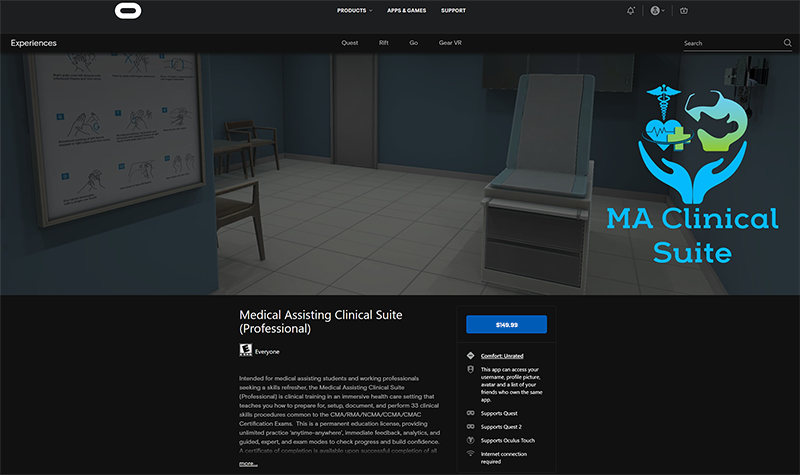As a medical assistant in a doctor's office, you are often asked to take a wound swab or a throat swab for culture, for identifying potential bacterial or fungal infection. This lab teaches you how to prepare for and obtain swabs for culture from the back of the throat and from wounds.
This lab is based on the entry-level competencies for which the Commission on Accreditation of Allied Health Education Programs (CAAHEP) and Accrediting Bureau of Health Education Schools (ABHES) test the Medical Assistant.
Learning Sequence Builds Confidence
The learner practices the procedure in the ‘guided mode’ (interaction hints and an expanded checklist guide) as often as they like.
When the learner is confident that they can accurately demonstrate the procedure without error, the learner plays the level in the ‘expert mode’ (no hints or checklist explanations) - which they can repeat as often as they wish.
Finally, when the learner is confident that they have mastered the procedure - they take a one-time ‘exam’ attempt which results in their grade for that procedure.
The Medical Assisting Clinical Suite (Professional) Edition is available for purchase through the Oculus AppLab for $149.99
Features
Guided Mode - ghosted hints show step-by-step positions, learner can 'see through' the patient to verify placement.
Oculus Quest Affordability & Ease of Use - next generation game development processes allow the untethered, mobile VR to present effective visual and interaction fidelity at 1/4 of the cost of desktop VR.
Feedback - Cloud-based enterprise incorporates real-time data acquisition that allows learner to track progress and mastery, and provides detailed insights for debrief with faculty.
Support - Enterprise incorporates Knowledge Base (with tutorial videos & FAQ) - combined with help desk support staff for learners and staff.
Obtain Swabs for Culture Checklist
- Gather supplies.
- Review the laboratory requisition form.
- Prepare the tray for the procedure
- Perform hand washing
- Put on gloves
- Introduce yourself to the patient, ask them to identify themselves with their full name and date of birth.
- Explain the procedure to the patient, allow patient time to ask questions.
- Position the patient for the procedure. Assist the patient in assuming a sitting position on the exam table.
- Open the sterile swab packaging.
- Pick up the tongue depressor and the sterile swab.
- Ask the patient to open their mouth and say “ah”.
- Place the tongue depressor on the tongue and depress.
- Inform the patient that you are about to swab them.
- Insert the swab in the back of the throat, gently swab between the tonsillar pillars and the tonsils.
- Withdraw the swab without touching any other structures.
- Remove tongue depressor.
- Place the swab in the transport medium.
- Label the transport medium and place it in the transport bag.
- Position the patient for the wound swab procedure. Assist the patient in assuming a sitting position on the exam table.
- Remove the dressing from the wound and discard it in the biohazard bin.
- Discard non-sterile gloves and don sterile gloves.
- Inspect the wound.
- Clean the area around the wound with an antiseptic swab.
- Discard gloves and perform hand hygiene.
- Open the sterile swab packaging.
- Don sterile gloves.
- Gently place the tip of swab over the wound and rotate the swab while moving over the wound.
- Place the swab in the transport medium.
- Label the transport medium and place it in the transport bag.
- Remove gloves, perform hand hygiene, and don new gloves.
- Apply dressing over the wound.
- Assist patient to a comfortable and safe position
- Send specimen to the lab immediately.
- Perform hand hygiene.
- Document the procedure and findings according to agency policy.

